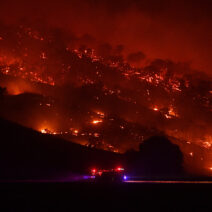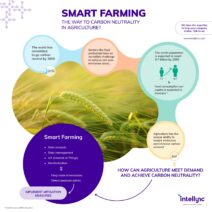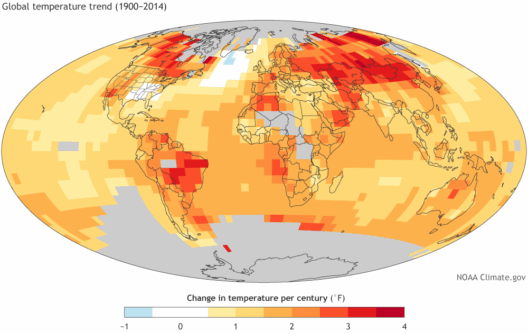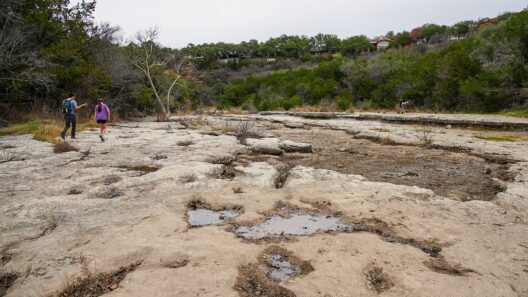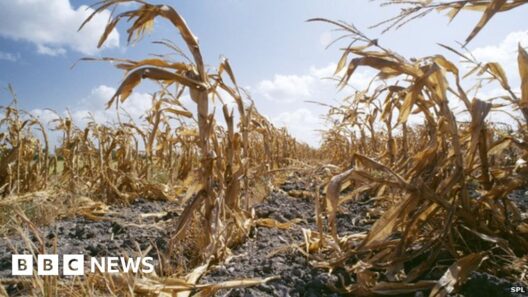When the heat hits our communities, does it evoke a question as playful as, “Is Mother Nature throwing an unexpected tantrum?” While it might seem humorous, the reality of global warming and its profound impact on weather patterns is far from amusing. Today, it is crucial to examine how climate change has fundamentally altered the atmospheric chemistry and dynamics, leading to the myriad weather phenomena we experience today.
To elucidate, we must first grasp the underlying mechanisms driving climate change. The Earth’s climate system is an intricate tapestry interwoven with the sun’s energy, the atmosphere, and the oceans. When the concentration of greenhouse gases, such as carbon dioxide and methane, increases due to human activities—predominantly the burning of fossil fuels—the Earth’s atmosphere becomes a more effective blanket, trapping heat. Consequently, the average global temperature rises, catalyzing a cascade of alterations in weather patterns.
Let us consider the ramifications of warmer air. Elevated temperatures engender greater evaporation rates from oceans, lakes, and rivers. This results in increased humidity, which can amplify precipitation events. Herein lies a paradox: while some regions may experience torrential downpours, others may fall victim to droughts. A study of recent climate trends showcases this dichotomy: while the Midwest grapples with floods, the Southwest finds itself parched. This uneven distribution manifests unexpected challenges for agriculture, infrastructure, and water resources.
Furthermore, the phenomenological consequences of global warming extend beyond precipitation. The frequency and intensity of storms—hurricanes, typhoons, and cyclones—have escalated dramatically. As ocean waters warm, they provide additional energy to these storm systems, facilitating their amplification and prolongation. The devastation wrought by recent hurricanes in coastal regions serves as a testimonious echo of this unsettling trend. Storm surges become more severe, heightening the threat to coastal communities and ecosystems.
Are we, therefore, witnessing the rise of weather anomalies as a new normal? The answer is painfully affirmative. Climatologists are documenting shifts in historical weather patterns, rendering once-credible forecasts unreliable. The cozy summer evening, now frequently interrupted by thunderstorms, or the unseasonably warm winter days become harbingers of unpredictability. The variability introduces daunting challenges for farmers, urban planners, and emergency services, all of whom depend on predictable weather for successful planning and operations.
Moreover, the notion of “heat waves” has attained new prominence as a dire consequence of climate change. Characterized by prolonged periods of excessively high temperatures, heat waves place overwhelming demands on energy resources for cooling and contribute to health risks such as heat exhaustion and heatstroke. Vulnerable populations—such as the elderly, children, and outdoor workers—face heightened susceptibility, placing an urgent need for community preparedness initiatives.
As we ponder the question, “What can individuals and communities do to mitigate these impacts?” it becomes clear that a multifaceted approach is necessary. Firstly, awareness and education play a critical role. Empowering communities to grasp the complexities of climate science can adequately inform local action and policy advocacy. Workshops, seminars, and information campaigns can illuminate the links between individual carbon footprints and larger systemic issues.
Secondly, adaptation strategies must be enacted. Urban areas should design adaptable infrastructure that can withstand extreme weather. Cities can create green spaces to mitigate heat effects, improve drainage systems to manage increased rainfall, and promote sustainable building practices that adhere to energy efficiency standards. Embracing a nature-based solution paradigm could yield promising results, particularly when it comes to restoring wetlands and forests that act as efficient buffers against flooding.
Furthermore, local governments should invest in renewable energy systems, reducing reliance on fossil fuels. Solar panels, wind turbines, and hydroelectric systems offer benefits that transcend mere energy provision. Transitioning to renewable energy sources reduces greenhouse gas emissions, curtails air pollution, and enhances energy security.
At the heart of the matter lies advocacy for robust climate policies at national and international levels. Individuals can engage in grassroots movements, lobbying initiatives, and political discourse to pressure policymakers to enact stricter emissions regulations. Collective voices demanding accountability can stimulate transformative shifts in the way societies approach climate and weather resilience.
In grappling with the astonishing implications of global warming on our weather, we might consider one final playful query: “How can we turn up the heat on climate action?” Encouragingly, the answer lies in collective agency. Through concerted efforts across ecological, social, and political domains, we have the potential to counteract the adverse effects of climate change. The question now is not whether we must act, but how swiftly we can mobilize and empower communities to take decisive action in the face of an ever-warming planet.
In summary, global warming’s influence on weather patterns poses an array of challenges that require immediate and innovative responses. As we advance, let us remain cognizant of the delicate interplay between climate science and our daily lives. By harnessing collective knowledge, fostering community resilience, and advocating for impactful policy changes, we can forge a sustainable future for generations to come.

